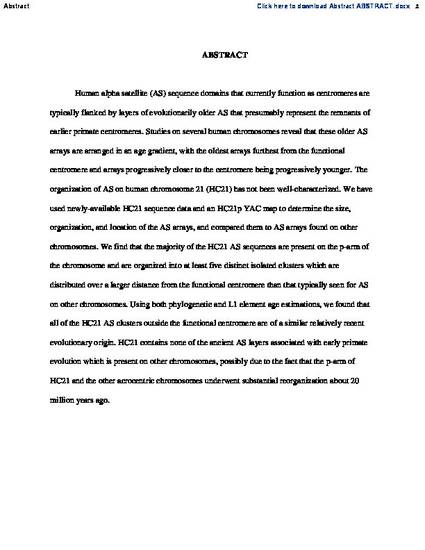
Human alpha satellite (AS) sequence domains that currently function as centromeres are typically flanked by layers of evolutionarily older AS that presumably represent the remnants of earlier primate centromeres. Studies on several human chromosomes reveal that these older AS arrays are arranged in an age gradient, with the oldest arrays farthest from the functional centromere and arrays progressively closer to the centromere being progressively younger. The organization of AS on human chromosome 21 (HC21) has not been well-characterized. We have used newly available HC21 sequence data and an HC21p YAC map to determine the size, organization, and location of the AS arrays, and compared them to AS arrays found on other chromosomes. We find that the majority of the HC21 AS sequences are present on the p-arm of the chromosome and are organized into at least five distinct isolated clusters which are distributed over a larger distance from the functional centromere than that typically seen for AS on other chromosomes. Using both phylogenetic and L1 element age estimations, we found that all of the HC21 AS clusters outside the functional centromere are of a similar relatively recent evolutionary origin. HC21 contains none of the ancient AS layers associated with early primate evolution which is present on other chromosomes, possibly due to the fact that the p-arm of HC21 and the other acrocentric chromosomes underwent substantial reorganization about 20 million years ago.
© Springer, 2016.
Available at: http://works.bepress.com/catherine-putonti/16/

Author Posting © Springer, 2016. This is the author's version of the work. It is posted here by permission of the ACM for personal use, not for redistribution. The definitive version was published in Chromosome Research, Vol. 24, July, 2016. http://dx.doi.org/10.1007/s10577-016-9530-z